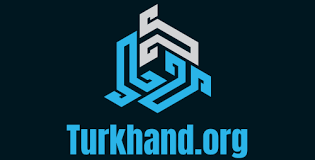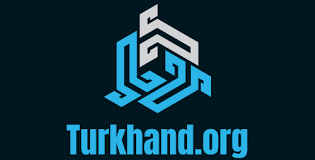Embroidery transforms logos, artwork, and patterns into stunning stitched creations on fabric, perfect for branding uniforms or personalizing gifts. Whether you’re a small business owner crafting merchandise or a hobbyist making custom apparel, the key to flawless embroidery lies in digitizing—converting digital images into machine-readable files. This process tells your embroidery machine exactly how to stitch your design, from stitch types to color sequences. With the right techniques, you can achieve professional results that elevate your projects. This guide shares expert tips to help you master digitizing for embroidery, ensuring your designs stitch out beautifully every time.
Understanding the Digitizing Process
Digitizing converts an image, like a logo or graphic, into a file format such as PES, DST, or JEF that your embroidery machine understands. The file includes instructions for stitch types (satin, fill, running), density, direction, and colors. Unlike a simple image, a digitized file is tailored to your machine and fabric, preventing issues like puckering or thread breaks.
Professionals use software like Wilcom EmbroideryStudio or Hatch Embroidery, but beginners can start with free tools like Ink/Stitch. Mastering digitizing requires attention to detail and practice, but these pro tips will help you create clean, high-quality designs from the start.
Essential Tools for Digitizing
Gather the right tools to set yourself up for success. A reliable computer runs digitizing software smoothly, and a graphics tablet can help with precise tracing, though it’s optional. A standard laptop or desktop works fine for most users.
For software, Ink/Stitch (an Inkscape extension) is great for beginners and supports formats like PES and DST. Paid options like Brother PE-Design, Wilcom, or Embrilliance Essentials offer advanced features like custom stitch types and fabric optimization. A vector-based editor like Adobe Illustrator or CorelDRAW prepares images by converting them to scalable formats, ensuring clean lines. You’ll also need a USB drive or direct connection to transfer files to your machine. These tools make digitizing accessible and effective.
Professional Tips for Flawless Digitizing
Follow these expert tips to create professional embroidery designs that stitch out perfectly.
1. Start with High-Quality Artwork
Use a vector file (SVG or AI) or a high-resolution raster image (300 DPI minimum) for sharp, clean lines. Pixelated images lead to blurry stitches, so convert raster files to vectors in Illustrator or CorelDRAW before digitizing. Simplify complex designs, removing tiny details or gradients that don’t translate well to embroidery.
2. Choose the Right Stitch Types
Select stitch types based on your design’s elements. Use satin stitches for borders or text under 1cm wide, fill (tatami) stitches for larger areas, and running stitches for fine details. For example, a logo’s outline might use satin, while its body uses fill. Matching stitches to design parts ensures clarity and durability.
3. Optimize Stitch Density
Set stitch density around 0.4mm for most fabrics to balance coverage and prevent puckering. For stretchy materials like knits, increase to 0.5mm to reduce needle penetrations. Dense fabrics like denim can handle tighter settings. Test density on scrap fabric to avoid gaps or overly thick stitching.
4. Use Underlay Stitches
Add underlay stitches to stabilize the fabric before main stitching. Zigzag underlay works for stretchy fabrics, while edge-run underlay suits denser materials. This foundation prevents shifting, especially for complex designs on t-shirts or hats, ensuring a clean stitch-out.
5. Adjust Pull Compensation
Fabric stretch can distort designs, especially on knits. Increase pull compensation by 0.2-0.4mm to account for this, ensuring the design stays true to size. Test on similar fabric to fine-tune settings, as overcompensation can cause gaps or misalignment.
6. Plan Stitch Direction
Align stitches to follow the design’s natural flow, like curving with a logo’s contours. This enhances appearance and reduces distortion. For example, angle fill stitches diagonally for a circular design to mimic its shape. Use your software’s tools to adjust angles for a polished look.
7. Minimize Jump Stitches
Long jump stitches between design parts cause thread trims, slowing your machine. Plan efficient stitch paths to keep jumps short or eliminate them. This improves efficiency and gives your design a cleaner finish, especially for intricate patterns.
8. Match Colors Accurately
Use a physical thread chart (e.g., Madeira or Isacord) to match digital colors to threads. Some formats like DST don’t store color data, so note thread choices separately. Plan the stitch order to minimize thread changes, saving time during embroidery.
9. Preview and Test Designs
Run a stitch simulation in your software to check for issues like overlaps or excessive jumps. Save the file in your machine’s format (e.g., PES for Brother) and test it on scrap fabric matching your final material. Adjust tension, density, or paths based on the test results.
10. Know Your Machine’s Limits
Check your machine’s manual for supported formats, hoop sizes, and stitch count limits. For example, some Brother machines cap at 100,000 stitches. Exceeding limits can cause errors, so design within these constraints to avoid file issues.
These tips, honed by professionals, ensure your digitized designs are precise and production-ready.
Common Challenges and Solutions
Digitizing can be tricky, but these solutions address common issues:
- Distorted Designs: Increase pull compensation for stretchy fabrics and test on similar material.
- Thread Breaks: High density or long jumps cause breaks. Lower density to 0.5mm and optimize stitch paths.
- Blurry Details: Small text or intricate elements may blur. Simplify designs or use running stitches for fine lines.
- Color Mismatches: Use a physical thread chart to ensure accurate shades, especially for formats lacking color data.
- File Errors: Verify the file format matches your machine’s requirements and check hoop size limits.
Testing on scrap fabric catches issues early, saving time and materials.
Advanced Techniques to Elevate Designs
Once you master the basics, try advanced techniques. For gradients, layer fill stitches with varying density to mimic shading. For 3D puff effects, use foam underlays and wide satin stitches (4-6mm), ensuring your machine supports this. Appliqué adds fabric layers for texture, reducing stitch counts for large designs. These methods create standout embroidery but require practice and testing.
When to Hire a Professional
DIY digitizing is great for simple designs, but complex logos or bulk orders may need expert help. Services like Absolute Digitizing or Digitizing Buddy create optimized files for any machine, handling intricate patterns or tight deadlines. Look for USA-based providers with strong portfolios, fast turnarounds (24-48 hours), and revisions. Outsourcing saves time for businesses or hobbyists needing pro results.
Conclusion
Mastering digitizing for embroidery unlocks a world of creative possibilities, letting you create professional designs that shine on fabric. With high-quality artwork, the right tools, and expert tips like optimizing stitch density and planning paths, you can achieve flawless results. Start simple, test thoroughly, and explore advanced techniques to take your skills further. Whether you digitize yourself or hire pros for complex projects, your embroidery will impress. Grab your software, fire up your machine, and start digitizing for embroidery today to bring your designs to life with precision and style.



